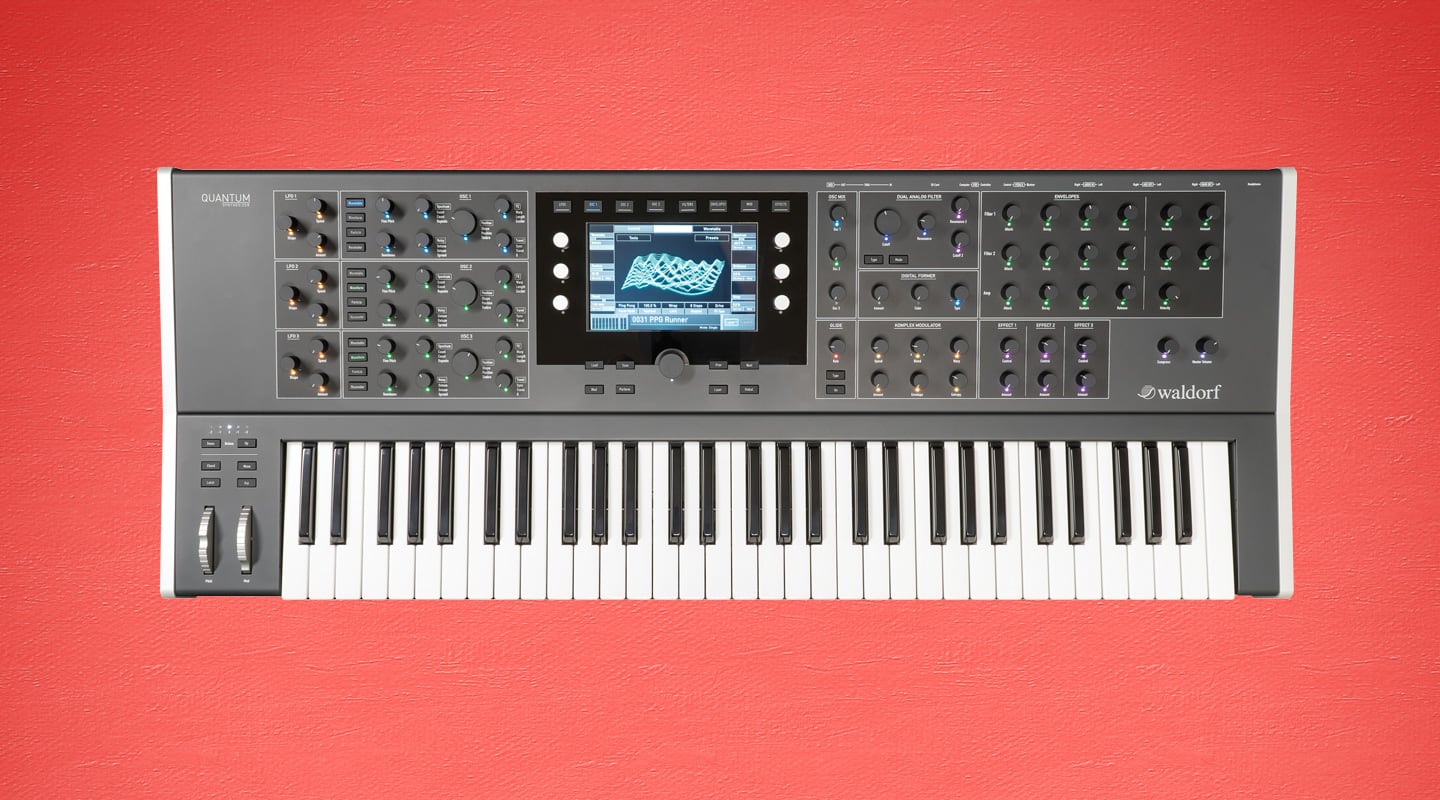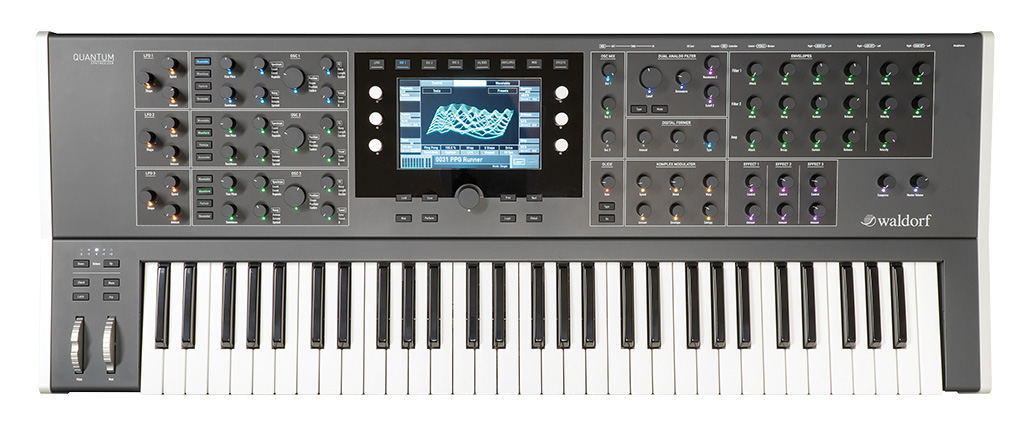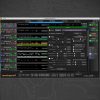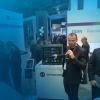
Review: Waldorf Quantum
Waldorf takes a leap forward with a hybrid beast that artfully combines the flexibility and progressiveness of software synths, with the control and character of hardware.
In recent years, it appears hardware synth manufacturers have lost their way. While many have returned to building pure-analogue synths, others are chasing the zeitgeist of DSP emulation based on their ‘greatest hits’ of the past. As much as I love excellent sounding subtractive analogue synths (and emulations), the sound palette is a well-worn shoe. Meanwhile, in the DAW world, soft synths really push the boat out in terms of innovation and sonic variety. While Serum, Omnisphere, Absynth, Razor, and Massive are highly regarded in this sphere, they still do not offer the tactile experience of interacting with a real instrument. Simultaneously, we’ve also witnessed a stampede toward modular synth hardware — proof that musicians are seeking exotic synthesis with the tactility of hardware.
The Waldorf Quantum, straddles all three worlds, and is perhaps poised to shake things up!
QUANTUM LEAP
Quantum is a bi-timbral, eight-voice hybrid digital/analogue synth powered by a quad-core ARM processor. It boasts digital oscillators with four synthesis types, sampler functionality, analogue filters and an immense modulation matrix. It has storage for up to a massive 10,000 patches. From the factory, a majority of the first 1500 locations are loaded with creations from a star-studded roster of sound designers. You can browse the memories by either bank, author or user definable attributes.
Hand-assembled in Germany, nothing feels built to a price; it feels magnificent in every respect. With full metal construction, 79 chassis-mounted aluminium knobs (that will last the distance) and a massive colour touch screen, this machine oozes quality.
The keybed is a Fatar TP-8 which feels superb to play and has velocity sensitivity and channel aftertouch. Pitch bend and modulation is provided on independent solid metal wheels.
The chassis’ solid metal construction is sleek, even incorporating an underside carry handle. Aside from its recessed wooden cheeks, a thoroughly modern aesthetic is at play — it feels like a 2018 star ship has landed in the studio.
SAMPLE-FUELED OSCILLATORS
Although downplayed, Quantum is actually a sampler with 4GB of flash storage. Samples can be imported from SD card, recorded from the rear stereo input or by resampling itself. Its sample playback functions are comparable with a traditional sampler with velocity/key range mapping and round-robin triggering however don’t expect to wrangle massive multi-sampled pianos and drum kits in this machine — that’s not the intention! Audio samples merely provide the fuel to be exploited by the oscillators in more creative ways.
NEED TO KNOW

THIS OSCILLATOR UNIVERSE
The oscillator section has vast potential for creative sound design and is Quantum’s ace in the hole. A single voice has three stereo oscillators and each can employ any of four synthesis modes.
Wavetable mode comes preloaded with over 80 wavetables covering a diverse range of spectral movements with the display providing a visually-rich means of exploration. Wavetable position, travel, spectrum and brilliance can be set to static values or easily modulated. Select from six different travel modes to scrub through wavetables. To inject drive and crunchy artefacts, wavetables can play back either Harsh or Dirty. You can create your own wavetables by analysis of samples or even a speech synthesis function (type in a phrase and it will render a wavetable of synthetic speech). Build your personal wavetable library by importing and exporting via load/save functions.
Waveform mode generates rich-sounding virtual analogue waveforms with sawtooth, sine, triangle, square, and noise (pink or white) on offer. These waves can be further shaped in a continuous fashion using a warp parameter. Additional virtual copies can be invoked in the form of kernels, up to eight deep, which may be detuned for massive unison sounds within a single oscillator. Pitch drift can be introduced yielding convincing emulation of wavering analogue circuits. A virtual hard sync function provides additional overtones based on the amount of transpose you set.
If you’re a super-saw seeker, consider this. All three oscillators can each be in Waveform mode, each having eight detuned kernels. Not enough? In the Layer settings page you can invoke pure mayhem by generating a unison stack with eight detuned voices of the above, heaping up a crazy 192 simultaneous detuned kernels.
Particle mode plays samples either in a traditional sampler player or Granular mode. If you’re considering a Quantum, Granular mode is of greater interest! After activating Granular mode, up to eight grains are available. Different travel modes can be engaged, and the pitch, length and amplitude shape of the grains can be tailored to an immense variety of sonic textures from even simple sample material. In particular, I found much inspiration by importing vocal stems from current DAW projects and twisting them into huge fluffy pads. The particle oscillator’s Granular mode also has a live stereo input function — it can granulate incoming audio in real-time! This can then elicit all manner of sonic fodder to capture using the resampling capability.
The Resonator mode generates tones based on an exciter signal which passes through a band-pass filter bank. The exciter signal can be an impulse noise, or any sample in memory. Resonator produces sounds ranging from basic plucky basses and strum-like sounds through to ethereal bell-like pads and organic, crusty alien pianos. This oscillator type is extremely versatile and invites experimentation. From my own experiments I found it to be the gateway to adding an exotic layer of spice to my patches.
My only critique of the oscillators is that the tuning range for all types is restricted to a range of only ±24 semitones. ±48 semitones would befit the creative versatility on offer elsewhere.
MODULATION STATION
Armed with six LFOs capable of audio rate speeds (up to 100Hz), even the most demanding modulation freak will be satisfied. Six waveshapes, including sample-and-hold, are available. When synced to the global tempo, speeds as slow as 1024 bars are possible (sadly, very few synths do this). A local AD envelope shape can be applied providing convenient fade ins/outs. A Slew function at extreme values will turn LFOs from BiPolar to Unipolar. LFOs may be further shaped by a Warp function, with all LFO parameters available for modulation.
Quantum’s six envelopes are the traditional ADSR fair supplemented with two looping modes. The first three are routed to the filters and the amp section, the remaining three, freely routable. While viewing the envelope screen, the on-screen graph shows a useful animation of each voice following the path of the envelope shape. The curve type can be altered independently for the Attack, Decay and Release stages. An EnveloperVar parameter introduces random fluctuations to the Attack and Decay times to simulate drifty analogue circuits. A delay function is provided, however, it is set only in time and thus is not syncable to the master clock. While the envelopes are fine for most purposes, it would be great if Waldorf’s own Blofeld envelopes (most notably its famed ADSDSR mode and looping functions) were eventually included in future updates.
Need a touch more chaos? Enter the Komplex Modulator. A pair of summed curves (variably crossfadable) with up to 32 steps allow you to carve shapes directly on the touch screen using your finger. These curves may have an independent number of steps, with each step having various transition modes (Linear, Step, Cosine, Saw and Curve). A Warp function can be engaged to further shape the output and Entropy adds random fluctuations (perfect for creating organic sounding soundscapes and drones).
If this isn’t enough, the 32-step note sequencer within the Performance section provides four additional sources which can be freely routed throughout the synthesis engine. The expression pedal input on the rear also comes into play if you happen to have an expression pedal handy. Eurorack owners will be pleased to know this input is voltage-compatible with modulation sources in your system.
Having this bounty of modulation sources on tap would be a crime without a decent modulation matrix to exploit it. Press the MOD page button and you’re greeted by a massive 40 modulation slots eclipsing all expectations. Any source can be mapped to any almost any destination parameter throughout the engine. All slots can be multiplied/scaled via a secondary source providing conditional modulations which can be invoked by expression controls, however, only one per slot. Notable destinations include switching between Wavetables, most envelope parameters and even most parameters in the Effects section. My only critique is that the sheer number of sources and destinations is laborious to scroll through (#firstworldproblems) and abbreviations are not as intuitive as you’d hope. I’m hoping a hierarchical menu could be implemented in future updates.
FILTER FACTORY
Quantum features a superb-sounding analogue filter section comprising dual low-pass filters with 12 and 24dB/octave slopes as well as saturated versions. These filters can run with either independent cut-off/resonance settings or in modes where they are coupled and offset in different ways. It’s worth noting that signals hitting the analogue filters are summed to mono (stereo output would require double the filter circuits).
In addition to the analogue filters, there is a Digital Former block. This is the opportunity to add drive and grit (drive, gain and bitcrusher), contort sounds via comb filters or further shape sounds using a wide array of digital filters. Waldorf has a long-established reputation for coding excellent digital filters and these are no exception! These algorithms are sourced from Waldorf’s own lineage — the virtual version of its PPG Wave, Largo (the software version of Blofeld) and the recent Nave software-based wavetable synth. Where appropriate, the full complement of pole options and HP/BP/Notch/LP are on offer. Digital Former provides stereo input/output so if you’ve coaxed substantial stereo movement from the oscillator section, the filters in the Digital Former block will preserve those effects.
The Routing page allows insertion of the Digital Former block pre/post the Dual Analogue Filter block or it can run in parallel to the analogue filters. Unusually, the Routing page is where Ring Modulation is introduced into the signal path. By this point, forward-thinking sound designers should be salivating at the possibilities of ring-modulating sample-based particle cloud oscillators against each other or Wavetables.
EFFECTS CHAMBER
Rather than a feature-clipped afterthought, the effects section offers reasonable sophistication. Five simultaneous effects blocks are available (with physical controls for the first three) and eight effects algorithms are on offer (phaser, chorus, flanger, delay, reverb, EQ, drive and compressor). I couldn’t find a means to change the routing of each FX block — they appear to be routed permanently in series.
The delay benefits from 10 control parameters and syncs to external clock. It’s evident a tape-style algorithm is in play when tweaking times for the delay taps. Although the reverb offers only four parameters for control (gain, time, colour and pre-delay) it sounds lush and smooth without metallic ringing artefacts. With its time parameter at maximum, the reverb tail is infinite. The chorus effect sounds particularly sweet with up to eight stages, 10 parameters to tweak and a nifty onscreen animation showing the behaviour of each stage.
For adventurous sound designers the news is good — modulation hooks are sprinkled everywhere throughout the effect parameters! The only missed opportunity here is modulation of the phaser’s centre-point.
HANDY ADDITIONS
A local preset system is available for many of the modules within Quantum, providing useful starting points for rapid sound creation. Since you can save your own presets, you can also build your own libraries of favourite settings. In the absence of a function to copy oscillator settings from one to another, this preset function provides a useful workaround.
The front panel knob LEDs have functionality beyond simple eye candy. They are colour-coded to reflect oscillator types and are used to indicate modulation sources and destinations when making assignments using the Mod button.
On the Global page, a Scope tab provides a real-time waveform display or FFT analysis. The input source can be tapped from the main outputs or can probe different module outputs within the synth. The Pitch tab unlocks Quantum’s microtuning function. Various temperaments are preloaded which may be augmented by manually entering your own scale tunings or by importing SCALA files. For musicians working outside of Western scales, this feature will be very welcome.
In the bottom left hand corner of the display, a series of eight meters show voice activity by default. Tapping on it reveals a menu providing options for it to display either a scope, analysers (lin/log) and even a useful MIDI monitor showing outgoing and incoming traffic.
PERFORMANCE SECTION
Pressing the Perform button accesses four pages of performance features. A key feature for live performers will be the Favourites function, which provides rapid access to six sets of 20 patches with each set presented as a 4 x 5 touch-matrix. There are 31 patterns on offer on the Arpeggiator page that extend well beyond traditional arpeggiation.
The sequencer provided up to 32 steps in addition to lanes for velocity and gate, and four other parameter lanes which appear as sources within the modulation matrix. Entering notes is a doddle: activate record mode, enter the notes you want in sequence and turn it off again. The module preset function also allows you to build a library of step sequences for use in other patches. Thankfully, each patch stores step sequence data locally rather than linking to a shared library. For TB303-inspired sequences, notes can be tied or rested using the touch screen.
The Modulation Pad feature provides an on-screen Kaoss-Pad inspired means of generating control data for the modulation matrix. Each axis can independently function in either BiPolar or UniPolar mode, and a momentary mode can be engaged. You can attach as many destinations as you desire to each axis.
You won’t find another synth offering anything similar in the hardware world. Hand-assembled in Germany, this machine oozes quality.
EARLY FIXES
Whilst this review was conducted with Firmware 1.2.1 installed, I have little doubt Waldorf has many refinements in store for the Quantum.
Some aspects of the user interface would benefit refinement. The physical save button requires you to touch a second button onscreen. Pressing the hardware button twice would be more intuitive. The key-tops of the onscreen QWERTY keyboard used for naming entities is too thin. I found text entry to be error-prone, even when taking care.
Quantum would benefit immensely from appearing as a USB mass-storage class device when attached to a computer via USB (currently, only MIDI functionality is provided). This would allow drag-n-drop import/export of files (rather than shuffling an SD card back and forth) and a better means of managing files within the internal flash storage.
Editing samples on the unit is a touch primitive currently. There is no means to zoom the waveform display in and out when editing start/end points, no zero-snap function and no normalisation function. I suspect most users will perform in-depth sample preparation on their DAWs first, then import them via SD Card
A SOUND DESIGNER’S DREAM
Quantum is an unashamedly digital-sounding synth capable of a wide palette of sounds. If you’re looking for an inspiring instrument capable of the most esoteric sound design capabilities around, it won’t disappoint you in any respect. It’s flexible, clever and will take several years for even the most demanding sound designer to exhaust its possibilities.
The fact that it doesn’t attempt to reiterate vintage designs in any way is completely refreshing. While it’s priced at the top end of the scale, you won’t find another synth offering anything similar in the hardware world. Quantum wins pole position in my ‘must buy’ list. I just have to move a few things on first.




























RESPONSES